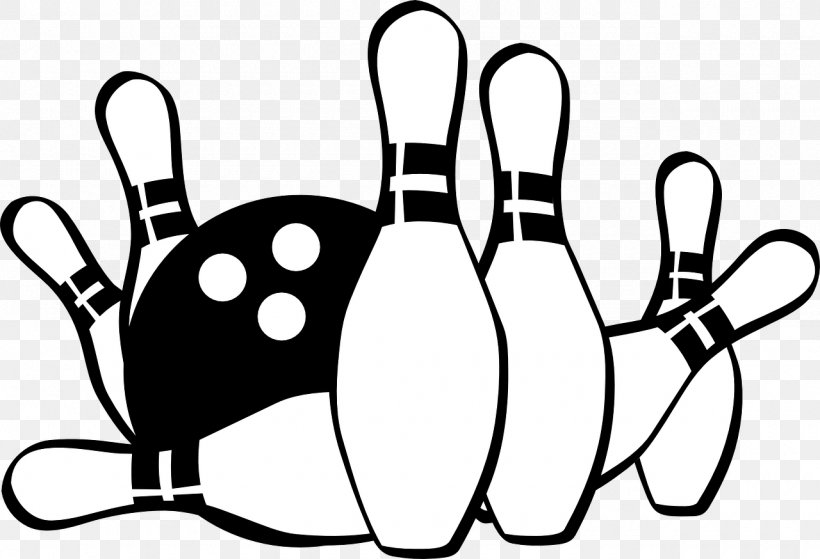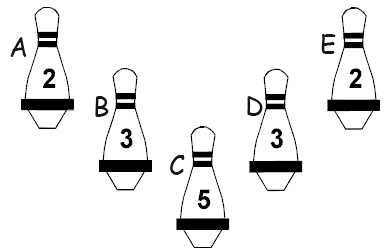

There are coaches who say that the ten pin is your friend.
Bowling with small ball and straight pins how to#
Knowing how to adjust your release to change these factors to match lane conditions is a necessity for the advanced bowler. Understanding that your release determines revolutions and the angles of axis tilt and rotation is important to be consistent with your ball reaction. A ball with zero tilt will have the most surface possible contacting the lane and will have the most potential for hook. The ball will spin on one spot all the way down the lane and never get into a roll. Imagine the most extreme tilt where the steel rod is pointing straight up in the air. How much the rotational axis of the ball tilts upward determines how much of the ball's surface will be in contact with the lane. Finding the middle ground at 45 degrees will give you adequate hook potential and give you the best chance to effectively play a variety of lane conditions. When the rod turns so it is now pointing along the target line, it has 90 degrees of axis rotation.Ī ball rolling in this manner has the greatest potential for hooking but it affords the athlete the least amount of control on the back ends. The more the rod turns without tilting, the more hook potential you have. With zero tilt and with the rod being in line with the foul line, the ball will roll in a straight line with little hook potential. If the rod is perfectly even with the lane, it is said to have zero tilt. Imagine the ball spinning down the lane and imagine there is a steel rod going through the ball so that the ball is rotating perfectly around the steel rod. Any inconsistencies in these two factors will change the hook potential of the ball and, therefore, strike potential. The other two factors controlled by the release are axis rotation and axis tilt. You can adjust this rate by using different hand positions as mentioned in the previous paragraph. Rev rate is simply how fast the ball spins. TAlong with balance and armswing, the release is a critical component to consistency. It is an advanced skill to be able to consistently adjust your rev rate to match oil conditions or just to throw the ball straighter at spares. Hold the football like the suitcase grip and your rev rate will be very low. Place your palm to the side like the shake hands grip and you will get a reduced rev rate on the football. If you place your palm under the ball (cupping) you will be able to achieve a high rev rate. An advanced technique is to practice different hand positions and watch what happens to the revolution rate of the football. Playing catch this way with a coach or a partner will help to feel the proper way to release an actual bowling ball. Holding the point of the football on the heel of the hand and pointing your index finger and the other point of the football at your target line, all you have to do is "bowl" the football releasing it so that it spirals.

Being able to alter your release to adjust to different situations will help you control your ball reaction to carry more strikes.Ī great way to teach a beginner how to hook the ball is to use a football as a teaching aid. Understanding how you release the ball is important. Moving your feet four boards and your target two boards is an example of this type of combined move. As soon as you see your ball hook early, MOVE! If the lanes are drying out badly a combination of angular and parallel adjustments may be in order. Oil breakdown in the heads is very problematic because your ball will hook early causing a much greater measure of error at the pin deck. This is called a parallel adjustment because you are moving your target line over a few inches parallel to your old target line.

When this happens, a two or three board adjustment inside with both your feet and your target line is in order. Any time you maintain your target on the lane and change your foot placement, you are making an angular adjustment.Īfter much play on the lanes, oil will begin to dry up in the "heads" or the front part of the lane. If you find your ball hooking too much on the back end you may make an angular adjustment the other way. When this happens, all you need to do is make a small "angular" adjustment by moving your feet one or two boards right for the right handed bowler. This can cause your ball to hit the pocket lighter and perhaps delay your balls' reaction. When this happens it has the effect of making your ball skid a little longer. When bowling balls roll through the front of the lane they will gather oil and "carry" it or push it down the lane into the dry area. Once you are lined up to throw strikes, the first problem you will usually run into with the oil is carry down. Learn some proven methods of making angular and parallel adjustments with your feet and your target. The oil on the lanes is dynamic and always changing.


 0 kommentar(er)
0 kommentar(er)
